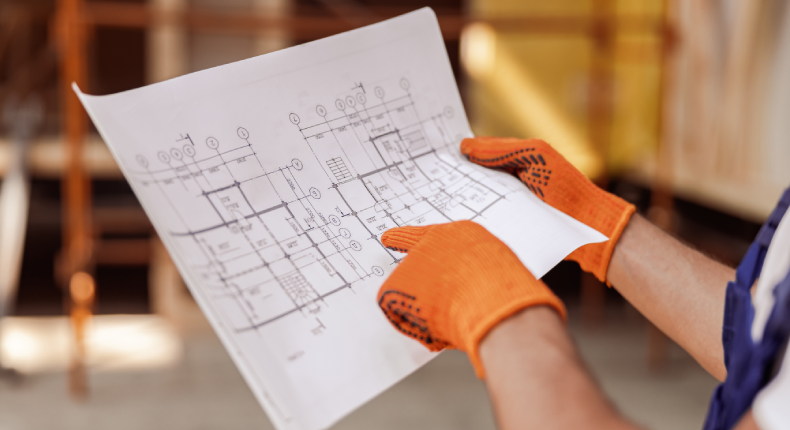Information
Legal information
Funded by


The layout design of a warehouse is a fundamental pillar for optimising logistics operations and enhancing supply chain efficiency. Effective planning facilitates the flow of goods, reduces wait times, and minimises operational costs. In this guide, we’ll explore everything necessary to create an effective warehouse layout.
Índice de contenidos
ToggleIn logistics, understanding the concept of layout is crucial for efficient warehouse management. A warehouse layout refers to the physical arrangement of areas, equipment, and pathways within the storage space. This planning includes the placement of receiving zones, storage, order preparation, and dispatch areas, as well as the aisles and access points required for the movement of goods and personnel. This approach is essential for coordinating both inbound logistics and reverse logistics services, optimising the movement of goods from origin through to the returns process.
Understanding the relevance of layout is essential for any business managing logistics operations. An appropriate design maximises available space and streamlines internal processes.
This translates to increased productivity, error reduction, and improved customer service levels. Additionally, it enables more effective quality control, ensuring each step in storage is executed accurately and that products meet the required standards.
Planning a warehouse layout is not a simple task and requires careful consideration of multiple factors. The following are essential elements to consider when designing your warehouse layout, as they will determine the efficiency and adaptability of the space to the specific needs of the business:
An effective layout is not just about space organisation but also about achieving specific business benefits. The main goals a well-designed warehouse layout should meet are:
Creating an effective layout requires following a structured process. Each step is crucial to ensure the final design meets the business’s objectives. Below are the fundamental steps to setting up a warehouse layout:
The first step is to fully understand the warehouse’s specific requirements. Evaluating product characteristics, handled volumes, and specific requirements is essential to grasp the warehouse’s needs. This includes analysing demand patterns, delivery times, and special storage requirements.
Organising the space into functional zones facilitates operations. Identifying and delineating different functional areas, such as receiving, storage, picking, and dispatch, according to workflows, helps avoid confusion and optimises the flow of goods.
Choosing the right system is crucial for efficiency. Selecting suitable storage solutions (selective racking, drive-in, push-back, among others) based on product type and turnover is essential. Factors like weight, size, and product access frequency are critical considerations.
Well-planned routes streamline warehouse movement. Planning paths for equipment and personnel ensures efficient and safe access to all areas. Considering aisle width and, if necessary, bidirectional circulation is important. Good aisle design reduces time and prevents accidents.
Technology can automate and enhance many processes. Incorporating automated systems, handling equipment, and information technologies optimises operations and eases management. Implementing RFID, voice-picking systems, and other technological advances can be highly beneficial.
Before final implementation, reviewing and refining the design is essential. Simulating operations, identifying potential bottlenecks, and making adjustments before finalising the layout allows for error correction and ensures the design meets all expectations.
Designing a warehouse layout is a strategic task requiring detailed planning and analysis. By carefully considering key factors and following a structured methodology, it’s possible to create an optimised space that meets current and future business needs. Investing in a good layout translates to long-term benefits, strengthening the company’s competitive position in the market.
Information
Legal information
Funded by


